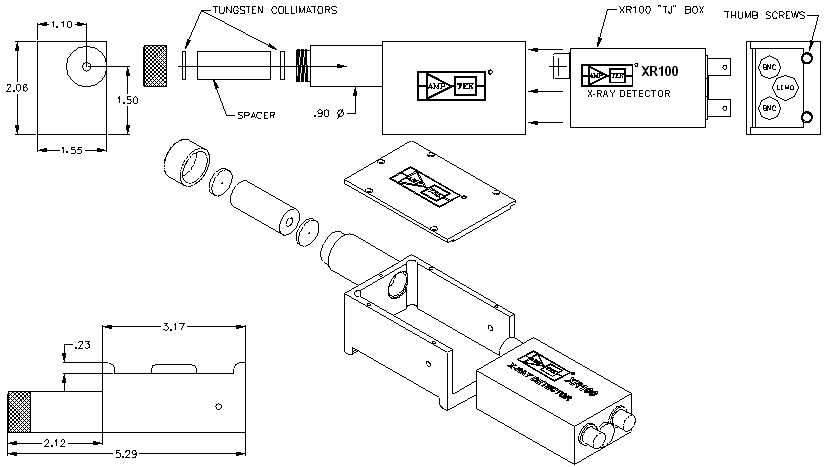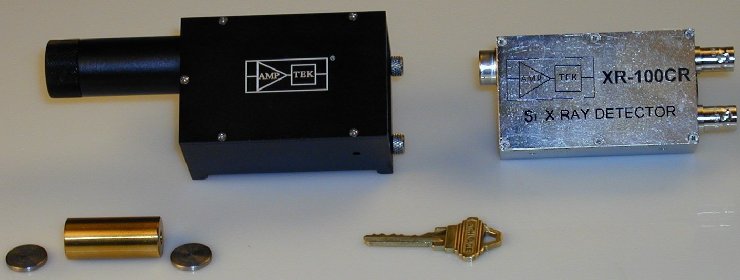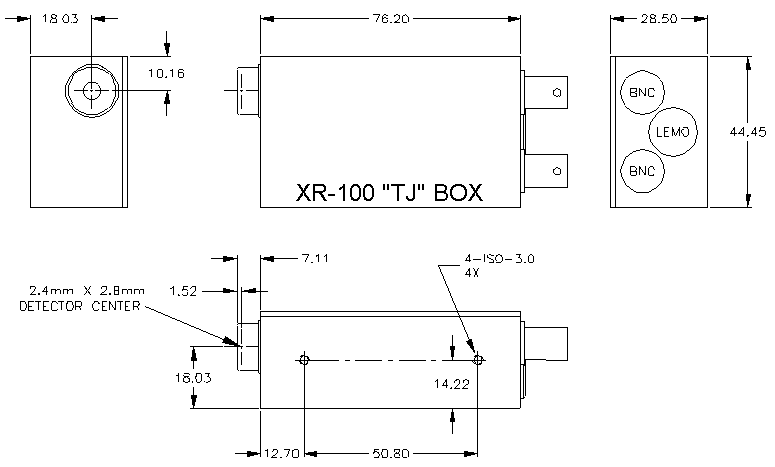



In order to accommodate applications where the X-ray flux is too high for both the detector and the electronics that process the X-ray spectrum, Amptek has developed a "Collimator Kit" to collimate the primary X-ray beam. This system is comprised of a special Detector/Preamp box (see TJ BOX) which slides inside a Collimator Housing. The Collimator Housing can accommodate up to two Tungsten collimator disks that are placed inside a bayonet holder in front of the detector. By selecting the appropriate Tungsten collimator disks, the user can reduce the incoming X-ray flux and allow the detector and electronics to process the X-ray spectrum. Seven different Tungsten collimator disks are provided with different size holes in order to allow for a wide range of applications.
The Collimator Housing is made out of brass in order to shield the detector and electronics from the primary X-ray source. Additionally, the bottom of the Collimator Housing incorporates a screw type fitting to allow for a standard tripod mount. There is no additional cost for the detector itself when ordered in a "TJ BOX" configuration. There is a cost for the Collimator Kit (see Price List).


All dimensions are in inches unless otherwise specified.
Revised February 6, 2001